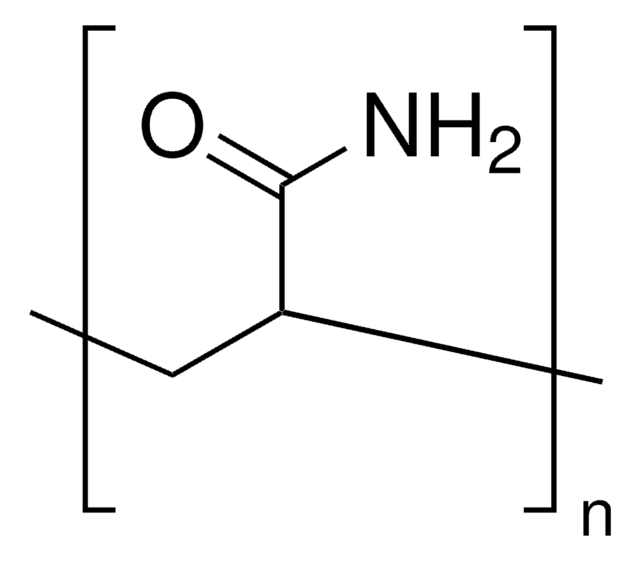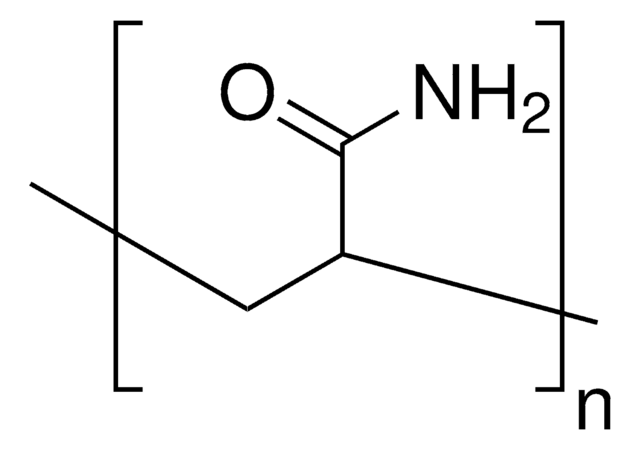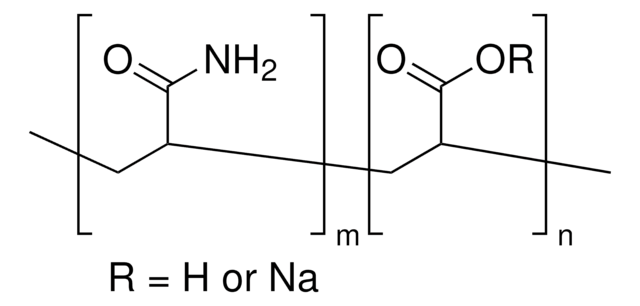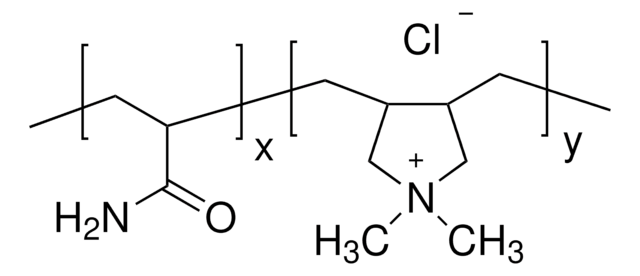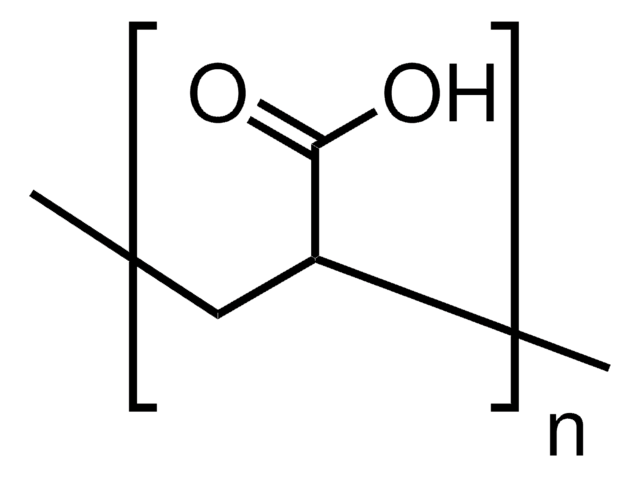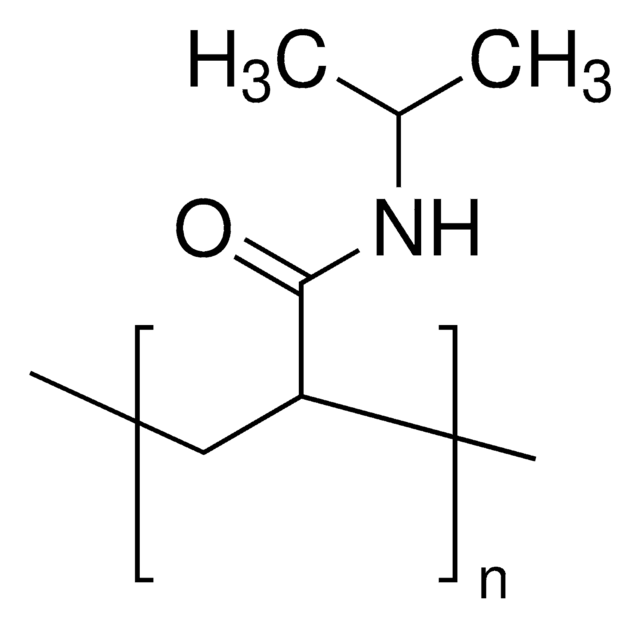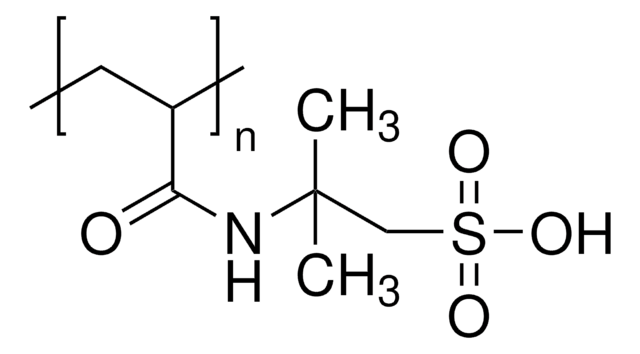749222
Polyacrylamide
average Mn 150,000
Synonyme(s) :
PAM
About This Item
Produits recommandés
Forme
solid
Niveau de qualité
Poids mol.
average Mn 150,000
Pf
>200 °C
InChI
1S/C3H5NO/c1-2-3(4)5/h2H,1H2,(H2,4,5)
Clé InChI
HRPVXLWXLXDGHG-UHFFFAOYSA-N
Vous recherchez des produits similaires ? Visite Guide de comparaison des produits
Application
- The influence of swelling on elastic properties of polyacrylamide hydrogels: Studies how swelling influences the mechanical properties of polyacrylamide hydrogels, relevant for biomaterials research and development (R Subramani et al., 2020).
- Basics and recent advances of two dimensional-polyacrylamide gel electrophoresis: Reviews advancements in gel-based proteomics using polyacrylamide gel electrophoresis, essential for protein separation techniques in biochemical research (S Magdeldin et al., 2014).
- Polyacrylamide gel electrophoresis: Provides comprehensive guidelines on using polyacrylamide gel electrophoresis for molecular biology applications, including its role in genotyping and molecular diagnostics (MR Green, J Sambrook, 2020).
Code de la classe de stockage
11 - Combustible Solids
Classe de danger pour l'eau (WGK)
WGK 2
Point d'éclair (°F)
Not applicable
Point d'éclair (°C)
Not applicable
Faites votre choix parmi les versions les plus récentes :
Déjà en possession de ce produit ?
Retrouvez la documentation relative aux produits que vous avez récemment achetés dans la Bibliothèque de documents.
Les clients ont également consulté
Articles
Collagen molecules play a critical role in tissue architecture and strength, and in cell-matrix interactions as insoluble ligands to regulate the diverse phenotypic activities of cells.
Highlighting existing and novel fabrication methods for both, solid and hydrogel-based scaffold for tissue engineering applications.
Notre équipe de scientifiques dispose d'une expérience dans tous les secteurs de la recherche, notamment en sciences de la vie, science des matériaux, synthèse chimique, chromatographie, analyse et dans de nombreux autres domaines..
Contacter notre Service technique